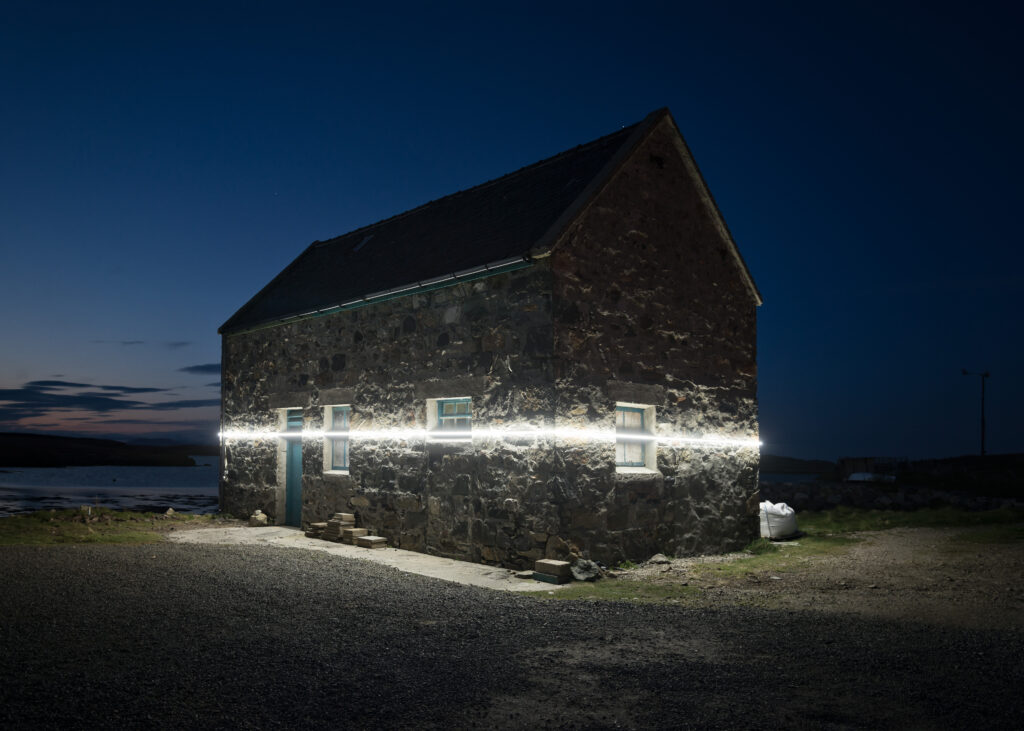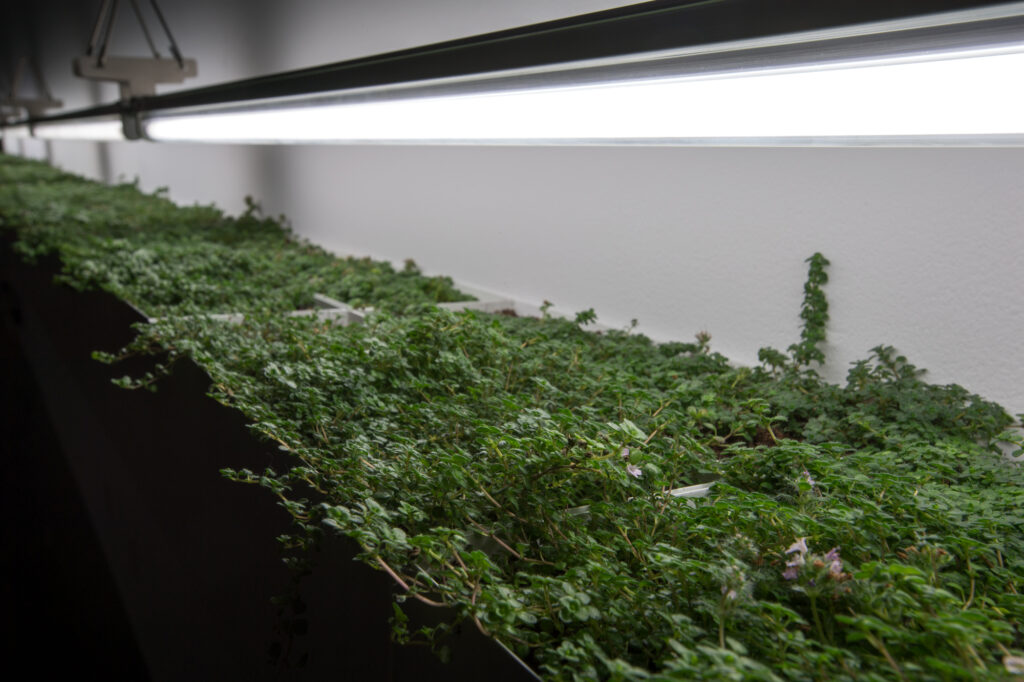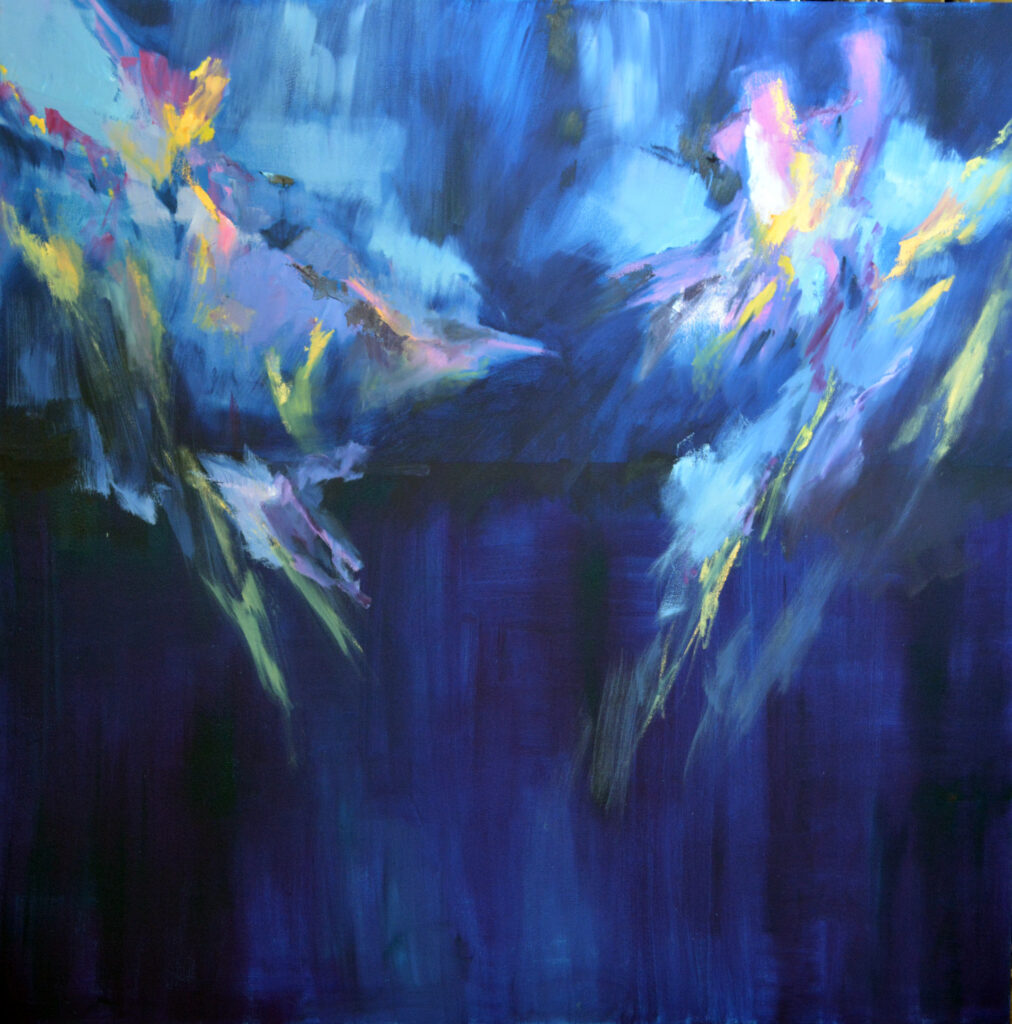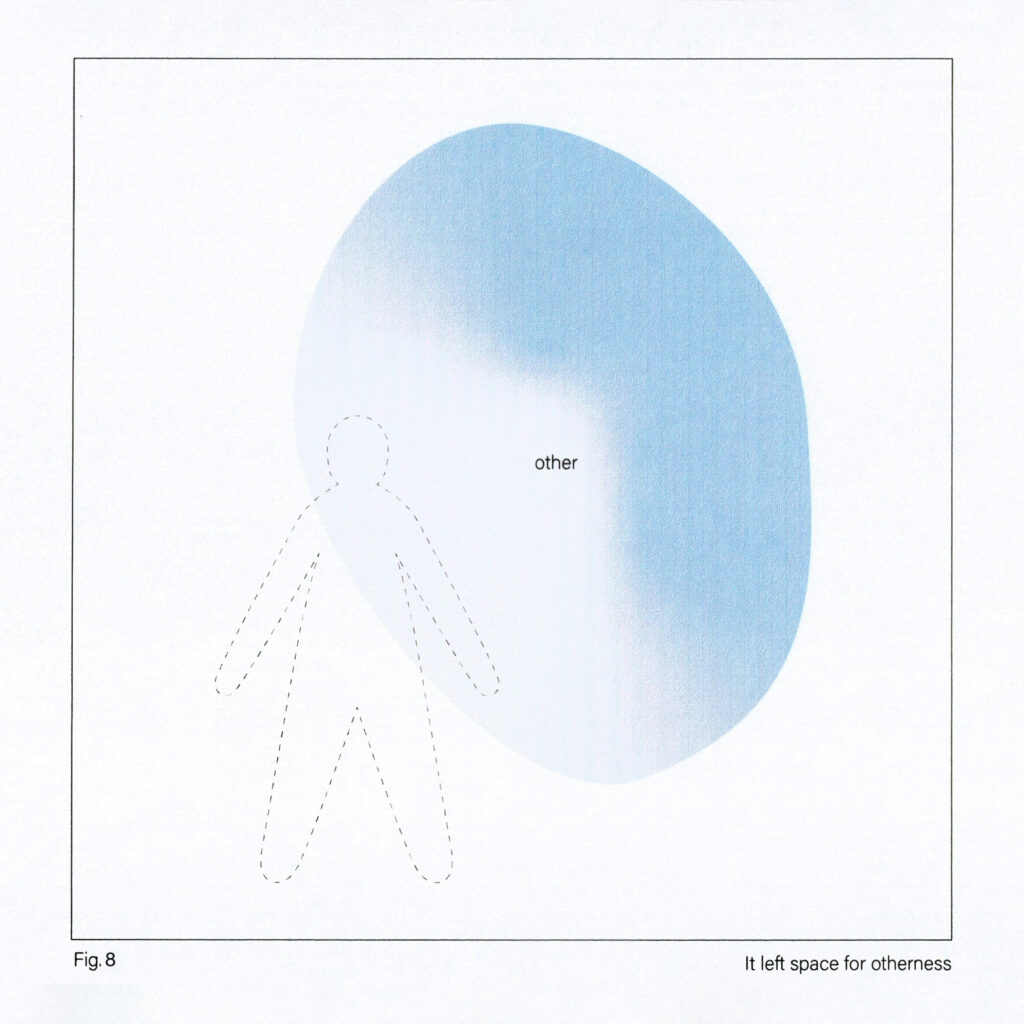Feeling Data: Aesthetic Empathy in Art and Science Collaborations
How the immersive, sensory experience of art opens possibilities for "feeling into" the natural world and blurring the divides between self and others

Data artist Jer Thorp’s Instagram is covered in birds. When I traveled to northern Minnesota with ornithologists, I watched them do point counts—a method of data collection that documents all the birds one can see and hear in a given place, for a specific amount of time. It’s a method of data collection that relies on qualia. I asked one of the researchers, “what about your work do you think would be important for the public to know?” They replied, “In part, it’s about aesthetics.”
Bird songs reverberate, as waves sent to our eardrums. We perceive the vibrations in our temporal lobe. We pull from prior knowledge in the hippocampus to identify the sound. In an instant we decide if what we’re sensating is sonic beauty, data, or a worthy Instagram post. Perhaps we feel data in more ways than we consciously recognize or are made to believe is possible.
For the past several years, I’ve worked closely with scientists to foster a sense of empathy for the natural world through contemporary art practice. From the standpoint of the operational definition of empathy—one of interpersonal perspective taking between humans—this is a difficult task. A century ago, however, “empathy” meant something quite different and was used primarily within aesthetic discourse. In the early 20th century, it was translated from the German word einfühlung, which meant simply, “in feeling.” It described the way our bodies relate to, take part in, and “feel into” works of art, nature, and objects.1 It’s why we would rise with mountains, be moved by paintings, or weep with willows.
This former definition of empathy—for the purposes of this discussion, aesthetic empathy—is an unconscious physiological reaction that causes us to enliven the world around us. It’s the visceral blurring of self and world that occurs when we experience something other than ourselves (fig. 1).
Amid working to foster empathy for the natural world, I’ve found myself feeling for scientific processes, research methods, and data sets. While aesthetic empathy has historically been reserved for art, nature, and objects, I believe we can feel it towards science and data—particularly when art is used to realize it as an object that we see ourselves in relation to (fig. 2).

This presents the possibility to not only understand the results of a scientific study or the predictions of a changing climate, but to feel them. Aesthetic empathy presents a challenge to see ourselves in relation to the world around us—and, in turn, may help us understand scientific concepts and data in different or more immediate ways.
Moving forward, I use the word data fluidly because—like Thorp’s Instagram and the ornithologists conducting point counts—I think data is fluid, in the sense that most things around us are or could become data, depending on how they are perceived. Also in my lexicon, I tend to use science to refer to its intellectual framework. Sometimes I edge back too, into the natural world, to consider the place where science and data could become manifest in the landscape. I do this all intentionally to begin an exploration into the possibilities of how art can embody science and data, how we process that experience physiologically, and, in turn, how those things can be felt.
Simulation through language
Vernon Lee—the pseudonym of Violet Paget—was one of the earliest theorists on aesthetic empathy. She spent much of her career during the Victorian era visiting museums with her partner Clementina Anstruther-Thomson, who also wrote about experimental aesthetics. The two marveled at the phenomenological experience art created within the body and created pseudo-experiments to explore how this would occur. In one thought experiment, Lee aimed to describe how we feel into the landscape and how that feeling is embedded in the language we use. She wrote,
“The mountain rises… All geologists tell us that every mountain is undergoing a steady lowering through its particles being weathered away and washed down; and our knowledge of landslides and avalanches shows us that the mountain, so far from rising, is descending. All we mean is that the mountain looks as if it were rising… The rising of which we are aware is going on in us…”2
Centuries later, a biological basis for this claim is being solidified. Neurological studies have found that reading action words can activate sensorimotor areas of the brain associated with performing that action. When reading the word “kick,” for example, motor areas of the brain that are associated with the physical action of kicking are activated.3 Other psychological studies have shown that when people think about the future, they have a tendency to lean forward and when they think about the past, they lean back—representative of the metaphor, the future is ahead.4 The physicality of language itself can be simulated in the brain.
Thinking about data more broadly, the words we use to refer to data processes reveal perhaps implicit truths. We take data, capture data, collect data. If language is simulated in the brain, how might these words be simulating a feeling of data that perpetuates colonialism and ownership over the natural world? While the verbs we choose to use in tandem with data may seem trivial, they clearly illuminate how data can be exploitative—neglecting the very populations that the research affects.
Feeling into data, we can begin to eradicate traditional notions of what data is, does, and can be. We see the ways in which data is not sets of numbers or metrics: data is, and always has been, a felt reality. It’s the way we experience the changing climate—and how we don’t all experience that change equally—how breathing in decades of pollution feels, who has access to tree coverage, and the felt repercussions of natural disasters. To use data that is anything less is a disservice.
By using art and poetry to describe data’s felt reality, we escape some of the traditional confines of science and data—the sterility of data collection, the constraints of the scientific method, and the necessity for “objectivity.” Additionally, it can incorporate cultural knowledge that has historically been left out of much of the natural sciences. For example, in a poem by Marshallese poet Kathy Jetñil-Kijiner and Inuk writer Aka Niviâna, Rise, they describe the lived, cultural knowledge and experiences of climate change through grounding in Marshallese legends—and their words simulate a more profound reality of data than numbers ever could.
The poem describes the colonialism that has exploited and neglected their islands, currently being lost to rising oceans, while illuminating the ways in which the landscape and people experience the changing climate. “Can you see our glaciers groaning,” they ask, in a moment of aesthetic empathy, allowing readers to feel into the pains of the ancient bodies of ice. “Let me bring my home to yours. Let’s watch as Miami, New York, Shanghai, Amsterdam, London, Rio de Janeiro, and Osaka try to breathe underwater,” they invite their readers to extend empathy to imagine what their homes would look and feel like if they were subjected to the same environmental injustices facing the Marshall Islands and Greenland.
The poem ends with, again, a simulated sensation of rising—this time, referring to our aptitude to rise to the challenge that the changing climate presents. “Each and everyone of us has to decide if we will rise.”5
Embodiment through immersion
As language can simulate physicality, our bodies, specifically their sensorimotor states, can reciprocally play a role in information processing.6 This is the crux of the theory of embodied cognition, the idea that our mental process can be rooted in and assisted by bodily interactions with the world.7 Aesthetic empathy relies, in part, on embodiment—as abstract ideas become tangible through sensations in our body.
Through immersion, we can embody data in a way that is felt by the entire body. In a panel discussion about the usefulness of art in describing data, artist and creative technologist Julieta Aguilera explained that by “creating embodied and immersive interactions with data, we are ultimately measuring the data against the human scale and scope of human perception.”8
The use of scale to immerse one’s body in data is particularly apparent in Timo Aho’s series of works, Lines. In these works, Aho depicts the predicted future sea level rise caused by the changing climate by projecting lines in space and on structures. The data becomes a tangible object that the viewer can see themselves in relation to, allowing the viewer to not only derive mental understanding from but also bodily feeling—a sense of feeling into.

Similarly, in his immersive installation, Surface, Minnesota-based artist Aaron Dysart used data from the extensive log books kept by the staff of the Army Corps of Engineering to illuminate the times that the lock at the Upper St. Anthony Falls was filled with the Mississippi’s waters (fig. 4). Data determined the shifting color and intensity of the lights to manifest the times the lock was emptied or filled with the river. The space was embodied and enlivened by data, and in turn, immersed viewers—providing a tangible object that the body can feel.

Sensation through multisensory modalities
In the aforementioned panel discussion on art and data, computer scientist Laura Monroe spoke to the immersiveness that can come as a result of creating work with multiple sensory stimuli. “If the immersion includes both visual and auditory input, the experience is not just the visual and also the auditory, but is both and also something greater than the two.”
Aesthetic empathy is not isolated to vision. We may feel into art and nature through auditory, olfactory, or tactical sensation—and utilizing multiple sensory pathways could create a more emotional response to the work. For example, all sensory pathways aside from olfaction synapse onto the thalamus, the brain’s sensory processing unit. Scent, however, bypasses the thalamus and goes directly to the limbic system for emotional assessment.9 At this point, our physiological processing of scent and emotionality merge to create an experience that is more holistic—something greater than one or the other.
In conversation with Sarita Zaleha, she reflected on an experience with scent in Iceland. Sitting at a cliffside, she noticed an unfamiliar scent. Processing the scent, she recognized that she was sitting on a patch of Arctic thyme. This fact was only revealed when she took time to notice—by feeling into the landscape with the body and by processing it emotionally.
In her installation under/currents, exhibited for Art(ists) on the Verge 8, Zaleha brought the scent she found at the edge of the Arctic to the gallery by creating a 20-foot long wall of Arctic thyme (fig. 3). While there were no instructions on whether or not to touch the thyme, a slight scent was misted into the air via a diffuser, inviting viewers to approach the space with the same careful perception required to attune one’s body to the natural environment. By creating a multisensory experience, the viewer was presented with more opportunities to feel into the landscape through all their senses.For Zaleha, the Arctic thyme was not a direct manifestation of data collection or scientific research, but instead a symbol of how, even when we think we are being aware and present in the environment, there’s always so much more that our bodies are not immediately attuned to. Perhaps it is similar to how, even when we are confronted with the data, many feel disconnected from climate change, because it does not often address the question of how one feels global warming. Furthermore, what data are missing because these critical components of emotional or felt reality are often overlooked?

Entrainment through rhythm
Once Zaleha brought the viewer to the Arctic environment through multisensory stimuli, she created an experience of anxiety. One way she achieved this is through an installation of clocks flashing on and off, creating a visual rhythm of anxiety and urgency.
Our bodies have an autonomic tendency to regulate with rhythm: a phenomenon called entrainment. Entrainment is the result of interactions between autonomous, spatially, or temporally rhythmic movements, and refers to the coupling of two independent oscillatory systems in such a way that their periods of oscillation become related by synchronization.10 The heartbeat, blood circulation, and respiration are all examples of naturally occurring rhythms that may be subject to entrain with another oscillatory system (fig. 6). One may experience an aesthetic empathy of anxiety towards Zaleha’s piece as their body taps into the tendency to regulate with the urgent flashing pattern displayed by the clocks.

Movement through abstraction
Another early figure on the discussion of aesthetic empathy, Robert Vischer, described aesthetic experience as consisting of “genuine empathy towards pure form, evident by the involuntary inclination to feel static forms move freely.”11
Neurological research is beginning to demonstrate why this might happen. Brain imaging studies have demonstrated that observing manipulable objects like tools, foods, or clothes, activates cortical regions considered to be involved in the physical control of action and not in the mere representation of the object.12 Our brains simulate how we may interact with and move to use an object.
Beyond observing an object, seeing the static consequence of a motor act—say, brush strokes on a canvas—is capable of activating motor representations in the observer’s brain. In a study on viewing abstract art, findings suggest that even when an image is devoid of any explicit representation of movement, the cortical motor system is still involved, perhaps simulating what it would feel like to perform these movements.¹⁴ Aesthetic empathy involves a rhythmic continuity between self and other, whether its movement is dynamic or an artifact.
Minnesota-based artist Betsy Ruth Byers’ abstract paintings consider how our bodies relate to the natural environment through color, light, and movement. Byers renders climate research and data in the sensitive indicator of melting glaciers. Capturing this melt, Byers uses vast strokes of color, often in downward motion. With aesthetic empathy, these movements create a simulation in the mind of the viewer of moving and melting downwards with the glacier.
Ego death through sublimity
When Lee described the feeling of rising with a mountain, she added that, “when we are engrossed by something outside ourselves, as we are engrossed in looking at the shape of that mountain, we cease thinking about ourselves.”13
Aesthetic empathy and sublimity parallel. They require you to experience something other than yourself—at times, inspiring a momentary ego death. The first time I saw Byers’ work was her solo show Submerge (fig. 7). The large scale paintings creating a sense of immersion, in tandem with vast downward movements of color inciting my motor system, took me out of my body. As the sense of self faded away, it left space for otherness to enter (fig. 8).
Art as embodied science or data can produce this sublimity in a way that, for example, a graphical representation can not. Byers’ work is only one example—it occurs in the scale of Aho’s and Dysart’s work, in the emotional perception of Zaleha’s work, and countless others.

Concluding thoughts
In conversation with my friend, an artist and soil scientist, she described a study in which she is collecting formal qualitative data on farmers’ perceptions of soil health. She was describing the richness of the data, yet the impossibility of being able to parse through and analyze them all because of the size. In the process of reducing the experience of climate change felt by these farmers to a numerical dataset, the very “feeling” is at risk of being lost. What are the consequences when we undervalue the kinds of knowing that are too complex to chart on a graph?
When the reality of climate change that many individuals experience is reduced to a data set, we risk losing the emotional salience that is actually capable of driving us to action. Art makes this mobility possible by positioning us within the world of qualia, which is necessary to pull the data back into something that is felt.
I see tremendous value for scientists who call on artists to help communicate their work, and furthermore, choose to work with them in a reciprocal relationship—acknowledging the depth of knowledge that the artist and feeling the data can offer the scientific practice. In these collaborations, we can place the (not-so) far out and abstracted climate predictions into a simulated and felt reality. We can ask our bodies the question: how might we experience futures marked by environmental distress?
Perhaps it is possible to create experiences that are so immediate that they need no narrative. To transmute the experience of data and transcend the formal parameters of science can be the role of artists in contemporary practice. In these spaces, aesthetic empathy enacts a type of visceral and bodily relation that can reveal the way nature, research, and data feel.
